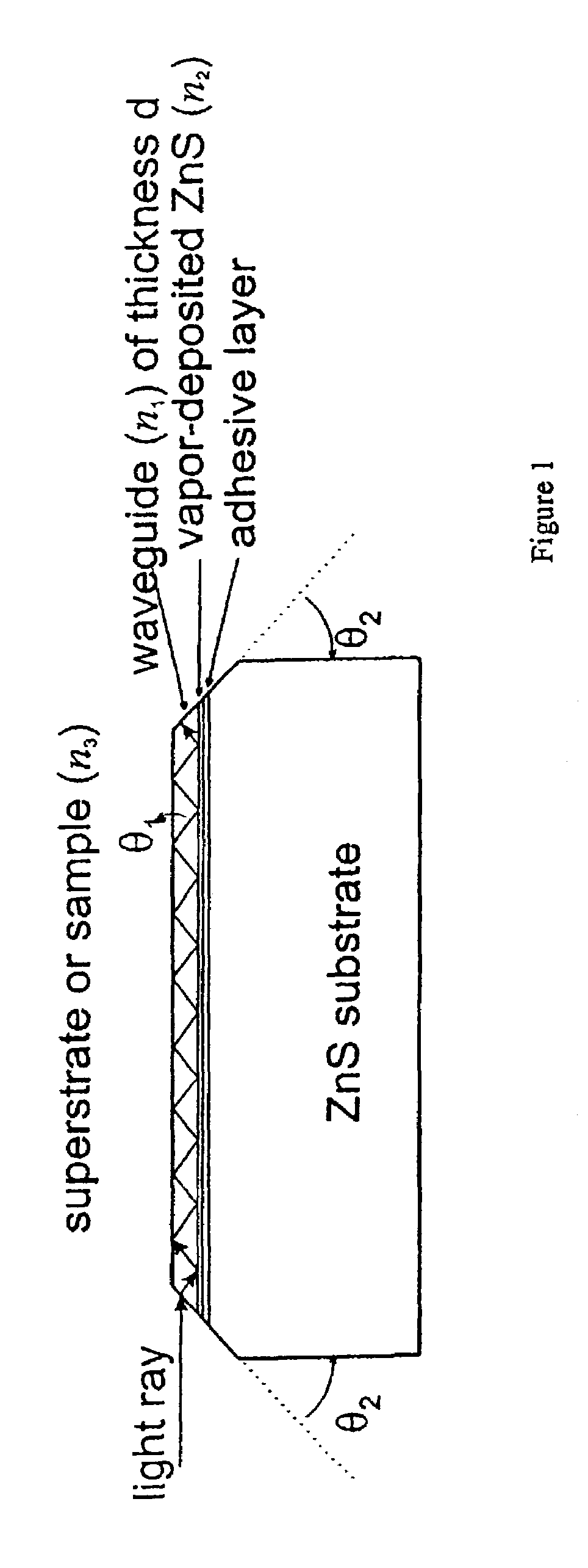Support planar and tapered quasi-planar germanium waveguides for infrared evanescent-wave sensing
a quasi-planar, infrared evanescent wave technology, applied in the direction of instruments, cladded optical fibres, optical elements, etc., can solve the problems of e, cafsub>2/sub>, and the attenuation of the waveguide is rather high, so as to increase the sampling sensitivity and increase the broadband transmission
- Summary
- Abstract
- Description
- Claims
- Application Information
AI Technical Summary
Benefits of technology
Problems solved by technology
Method used
Image
Examples
Embodiment Construction
[0035]The waveguides manufactured herein are from germanium prisms, however as the advantages over prior art waveguides are obtained through the science rather than the materials, other elements can be substituted. For example, silicon or cadmium tellurium, will behave similarly, although the mechanical properties of these, and other, materials will require attention to procedures. For example, CdTe is significantly more brittle than Ge and therefore requires additional care during the grinding procedures. When selecting a cladding layer or substrate, the physical properties in relation to one another and to the waveguide material must be taken into account. For example, when selecting a cladding material, the strength of attachment to the waveguide and to the cement / substrate must be considered. Selection of a substrate must take into consideration the rigidity, optical transparency in the UV and the ability to reach a high degree of flatness in surface polish. The Ge / ZnS / quartz co...
PUM
| Property | Measurement | Unit |
|---|---|---|
| thickness | aaaaa | aaaaa |
| thickness | aaaaa | aaaaa |
| diameter | aaaaa | aaaaa |
Abstract
Description
Claims
Application Information
 Login to View More
Login to View More - R&D
- Intellectual Property
- Life Sciences
- Materials
- Tech Scout
- Unparalleled Data Quality
- Higher Quality Content
- 60% Fewer Hallucinations
Browse by: Latest US Patents, China's latest patents, Technical Efficacy Thesaurus, Application Domain, Technology Topic, Popular Technical Reports.
© 2025 PatSnap. All rights reserved.Legal|Privacy policy|Modern Slavery Act Transparency Statement|Sitemap|About US| Contact US: help@patsnap.com



